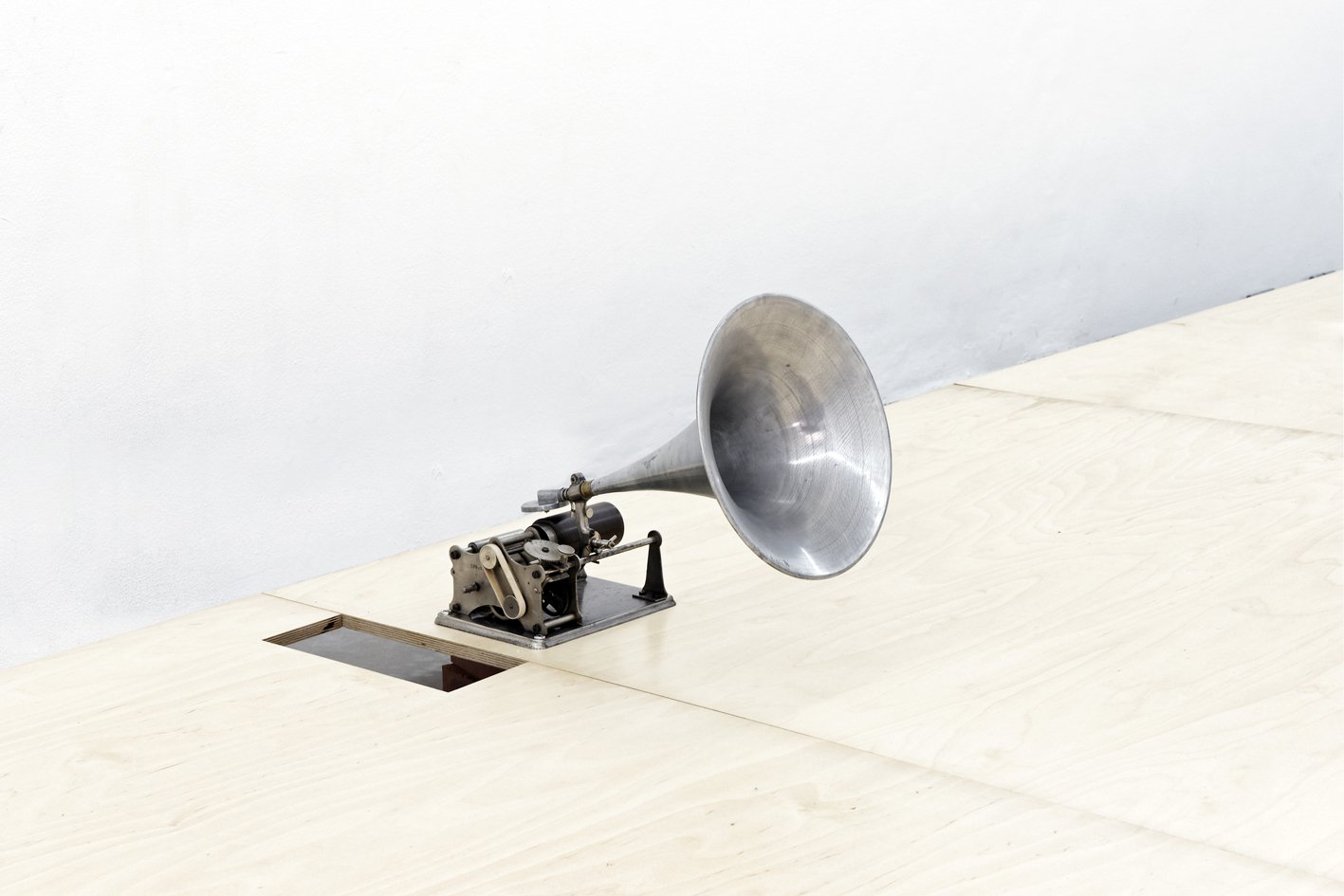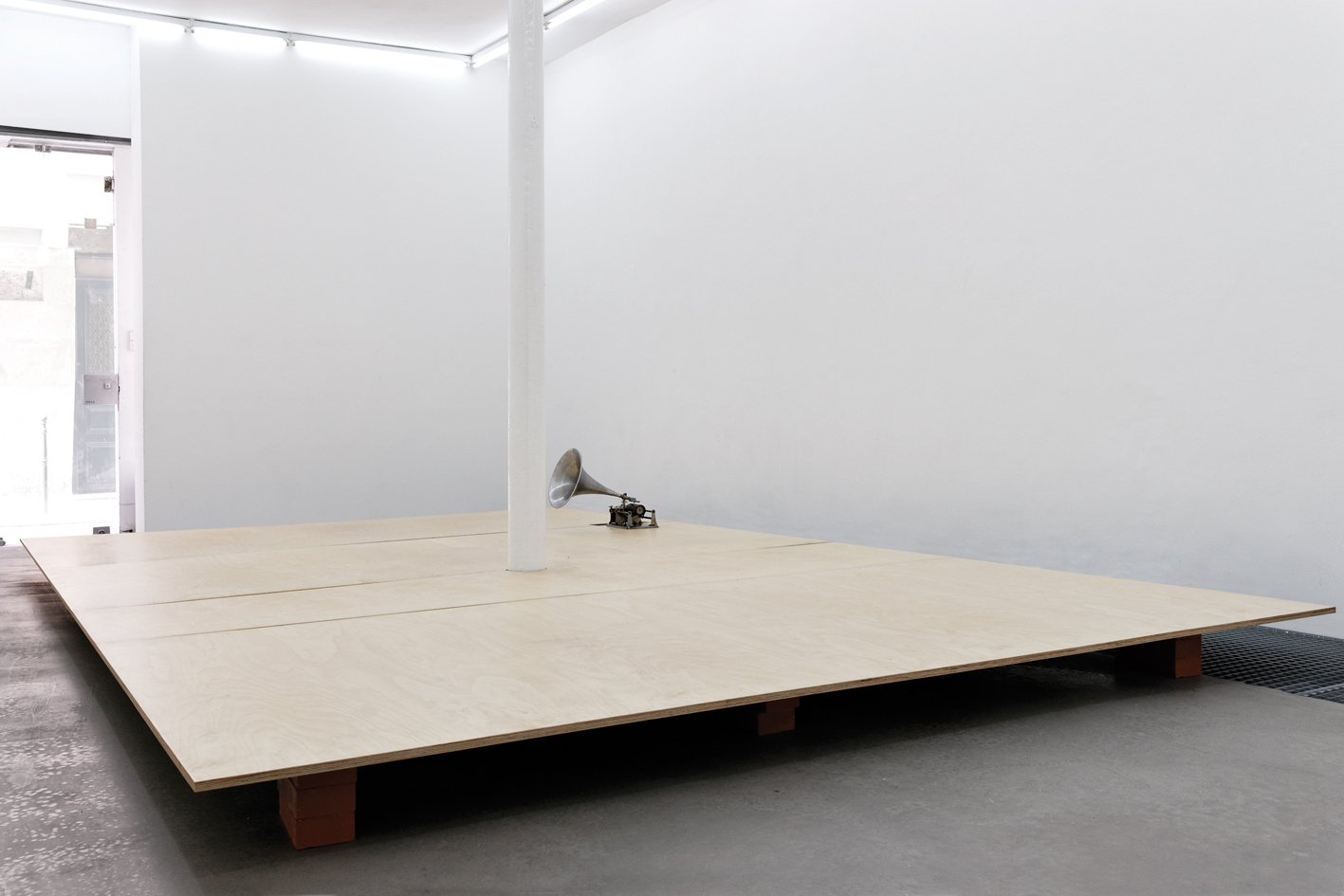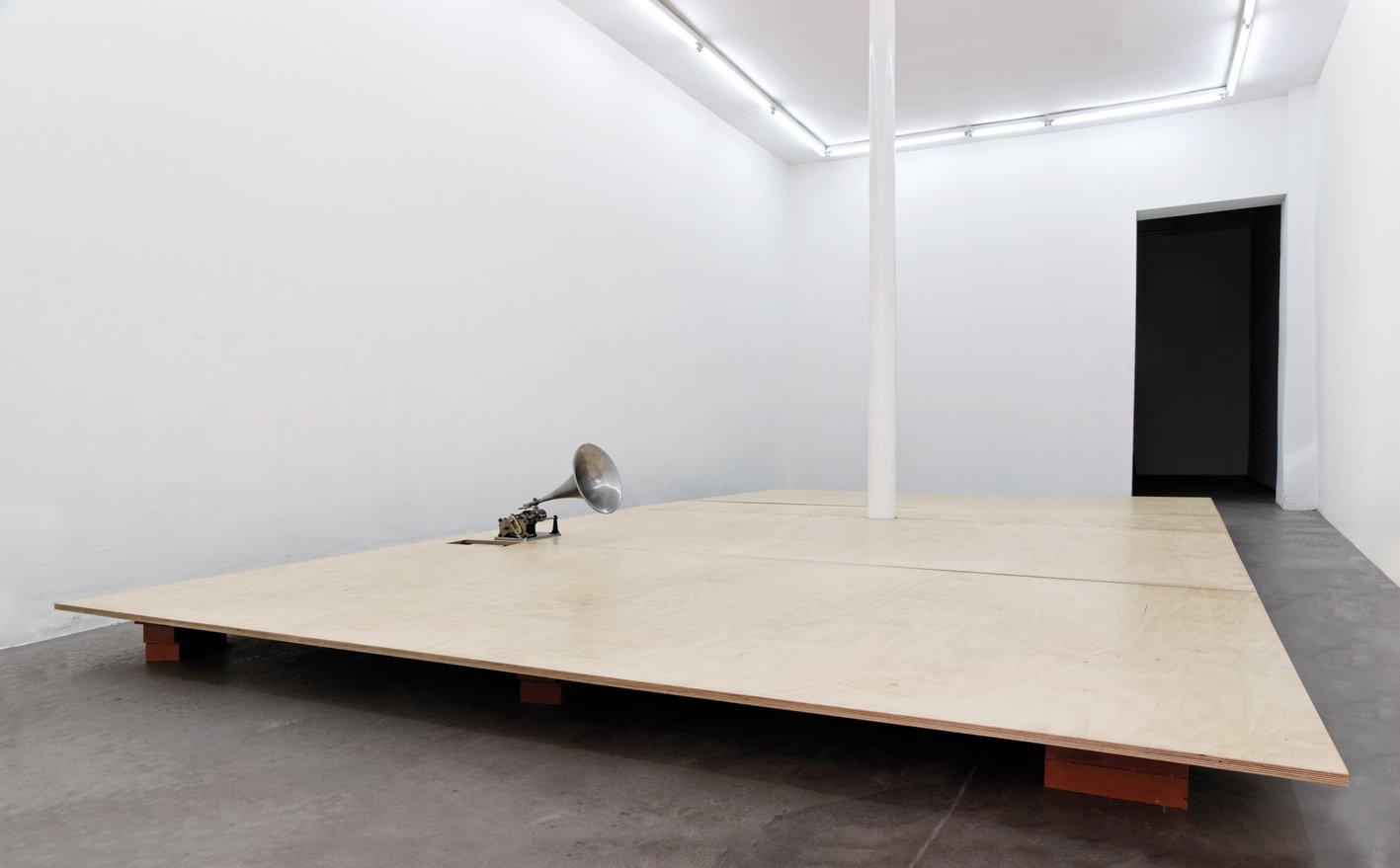
SCHLEICHER/LANGE PARIS
LAURENT MONTARON
17 March, 2011 - 30 April, 2011






-
Laurent Montaron’s third solo exhibition at SCHLEICHER/LANGE brings together two new works and Phoenix, an installation previously shown at the Kunsthaus Baselland in Basel during the artist’s one-man show there in 2010.
Phoenix (2010) comprises layers of plywood resting on red bricks and forming a stage-like area on which is placed a Phénix brand wax-cylinder phonograph. When the phonograph is activated the listener hears the voice of a person speaking in tongues.
Thomas Edison was the first to take out a patent for the phonograph, in 1877. Suffering from increasing deafness, he had invented the device to immortalise “the last words of the dying”. Thanks to this instrument, then, we became able to preserve the memory of voices we could not imitate. The advent of the phonograph – contemporary with the discovery of the unconscious – made it possible for the first time to hear one’s own voice. In Montaron’s installation the phonograph takes the place of the stage prompter, and reminds us of media theoretician Friedrich Kittler’s remark in his book Gramophone, Film, Typewriter, to the effect that like the chariot of the soul in Plato’s Phaedrus, “media are always flight apparatuses into the great beyond.”
“My intention,” the artist has said in an interview, “was not only to transform these questions about the advent of the media into images – although I do believe that to some extent the questions are being asked in the same way today as they were a hundred years ago – but also to make the experience of disappearance part of the work. As in a number of my other works, the physical medium is wearing out as we listen and we’re witnessing the death of the sound. In a way the viewer remains the sole repository of the memory of the work.”
Lent portrait de Sainte Bernadette (“Slow Portrait of St Bernadette”, 2011) is slow-motion 16 mm film loop with the camera moving from the saint’s mouth to her eyes. Showing no signs of decomposition, Bernadette’s body has been at rest in Nevers, France, since she died in 1879. She was beatified on 14 June 1925 and canonised on 8 December 1933, after ecclesiastical processes requiring that the coffin be opened three times. Each time the body was intact. Minolta Planetarium MS-15 (2011) is a large-format photograph taken inside the planetarium in Memphis, in the United States. Against the backdrop of a starry sky we ultimately become aware, in the foreground, of the machine that projects the images of the stars. These three works come together as a group that provides an insight into several aspects of the artist’s work, notably his interest in the history of media from the appearance of mechanical modes of representation in the late 19th century up to today’s different digital forms. Their coming has transformed our ways of depicting and imagining the world. By modifying the grounds of our knowledge systems, they have also dramatically affected our beliefs and, at the same time, our image of the self. And while photographs have modified our perception of space, it is through the recording, processing and reproduction of image, sound and the voice that time itself has changed.
Laurent Montaron’s work homes in on the paradoxes attendant on our awareness of modernity, and simultaneously on the tools that shape our representations, revealing the sometimes irrational element of belief involved.